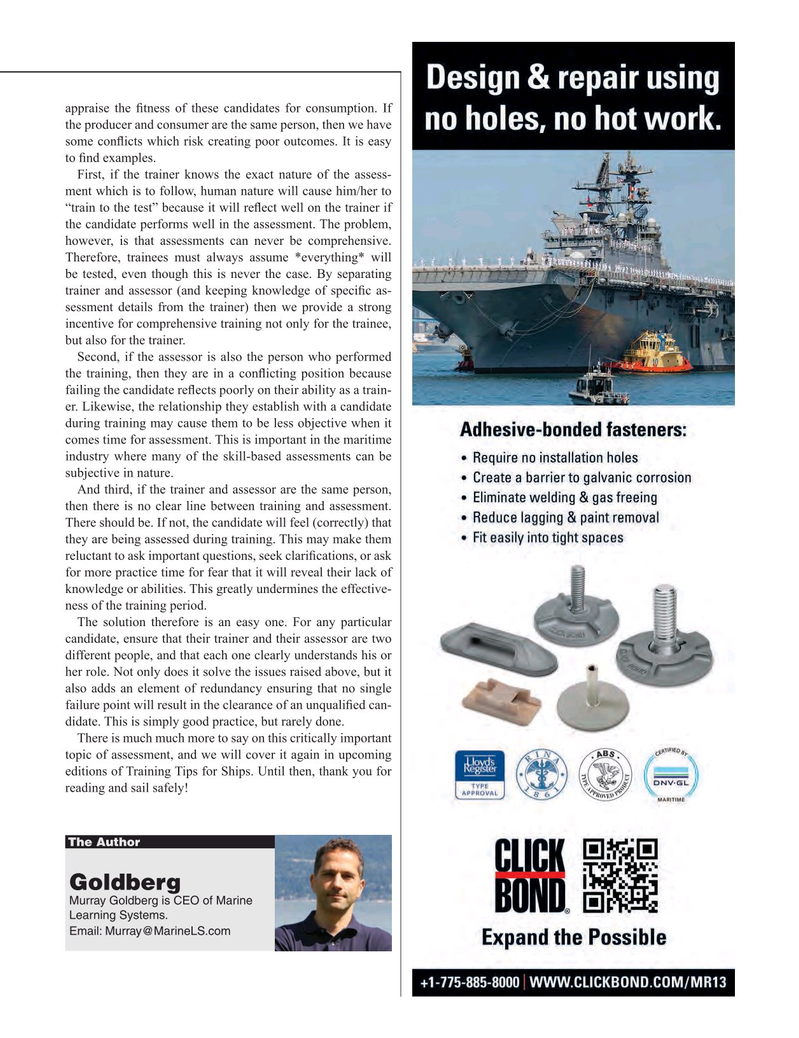
Page 17: of Maritime Reporter Magazine (November 2022)
The Workboat Edition
Read this page in Pdf, Flash or Html5 edition of November 2022 Maritime Reporter Magazine
appraise the ? tness of these candidates for consumption. If the producer and consumer are the same person, then we have some con? icts which risk creating poor outcomes. It is easy to ? nd examples.
First, if the trainer knows the exact nature of the assess- ment which is to follow, human nature will cause him/her to “train to the test” because it will re? ect well on the trainer if the candidate performs well in the assessment. The problem, however, is that assessments can never be comprehensive.
Therefore, trainees must always assume *everything* will be tested, even though this is never the case. By separating trainer and assessor (and keeping knowledge of speci? c as- sessment details from the trainer) then we provide a strong incentive for comprehensive training not only for the trainee, but also for the trainer.
Second, if the assessor is also the person who performed the training, then they are in a con? icting position because failing the candidate re? ects poorly on their ability as a train- er. Likewise, the relationship they establish with a candidate during training may cause them to be less objective when it comes time for assessment. This is important in the maritime industry where many of the skill-based assessments can be subjective in nature.
And third, if the trainer and assessor are the same person, then there is no clear line between training and assessment.
There should be. If not, the candidate will feel (correctly) that they are being assessed during training. This may make them reluctant to ask important questions, seek clari? cations, or ask for more practice time for fear that it will reveal their lack of knowledge or abilities. This greatly undermines the effective- ness of the training period.
The solution therefore is an easy one. For any particular candidate, ensure that their trainer and their assessor are two different people, and that each one clearly understands his or her role. Not only does it solve the issues raised above, but it also adds an element of redundancy ensuring that no single failure point will result in the clearance of an unquali? ed can- didate. This is simply good practice, but rarely done.
There is much much more to say on this critically important topic of assessment, and we will cover it again in upcoming editions of Training Tips for Ships. Until then, thank you for reading and sail safely!
The Author
Goldberg
Murray Goldberg is CEO of Marine
Learning Systems.
Email: [email protected]
MR #11 (1-17).indd 17 11/3/2022 5:14:10 PM

 16
16

 18
18
